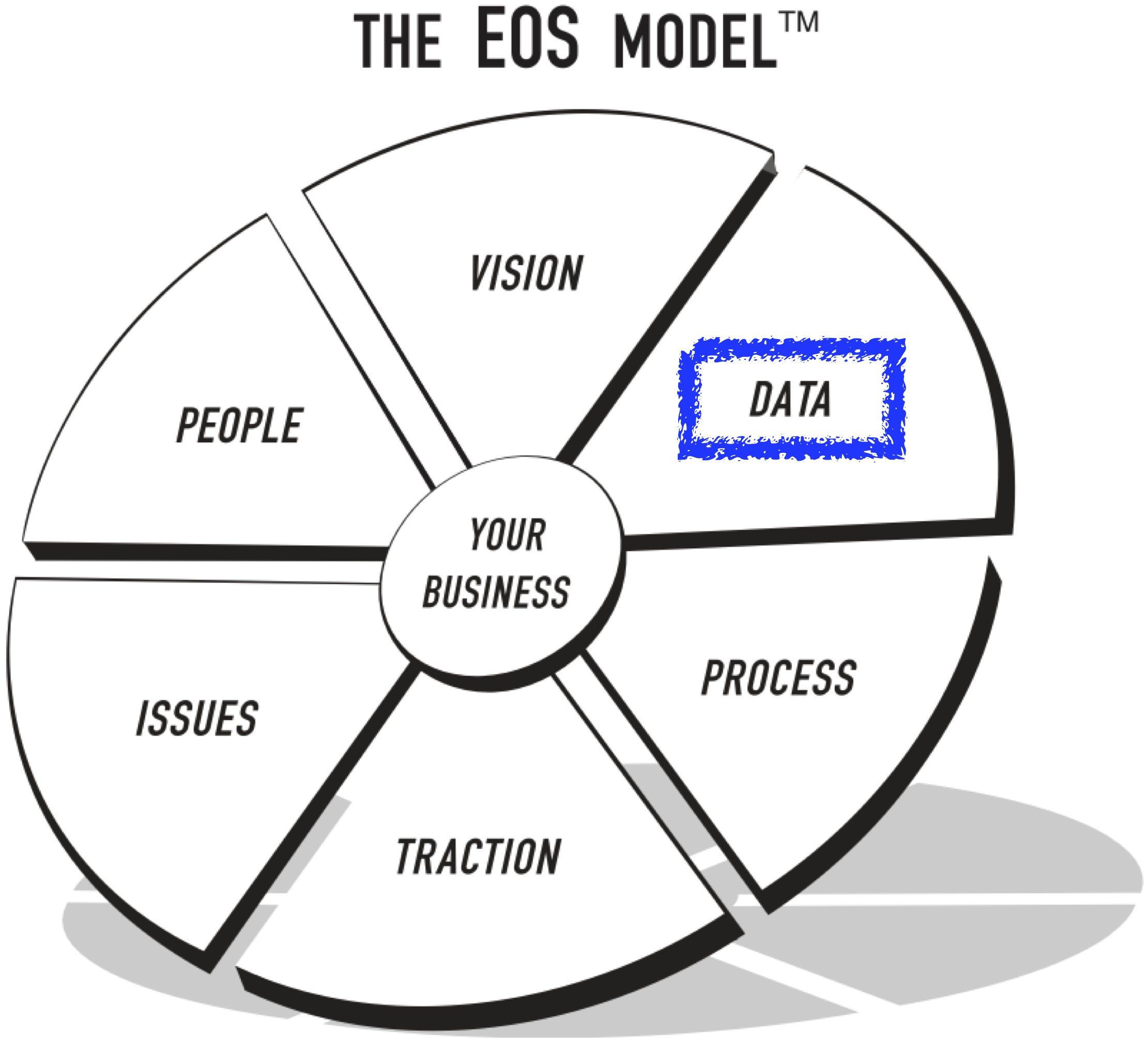Data + EOS
04 Feb 2022Traction’s chapter on The Data Component describes a pilot flying over an ocean. During the flight, the pilot announces:
I’ve got bad news and good news. The bad news is that our gauges are broken. We don’t know how fast we’re flying or in what direction, and we don’t know our fuel level. The good news is that we’re making great time!
An entrepreneur needs data to run a business, just as a pilot needs gauges to fly a plane. Data makes progress visible, and data also tells us when course corrections are needed.
The Data Component
This article is part of a series on Traction and the Entrepreneurial Operating System (EOS). EOS is a set of tools that enables a business leader to grow a company while maintaining sanity. Today’s EOS component: Data.
Scorecard
A scorecard is a succinct collection of numbers that can tell you at a glance how a business is doing.
One important attribute of a scorecard: It must give useful information while there’s still time to act. A profit & lost (P&L) statement, for example, does not work well as a scorecard because P&L numbers are trailing indicators. They’re reported after action has already been taken, and you can’t change the past.
A useful daily scorecard for a sales team might report the number of calls made during a given day, the number of orders received because of those calls, and the responses given by customers who decided not to buy that day.
Every business has a unique scorecard.
Creating a Scorecard
The author proposes a clever exercise to guide the reader through scorecard creation. The head of the business should gather the leadership team together and ask them to imagine being on a desert island somewhere. The island does not have email or phone lines. All the team has is sheet of paper with a collection of numbers. The numbers are magically updated every week. And this magic paper, the scorecard, is the only tool the leadership team receives to keep track of the business on a weekly basis.
What categories will the leaders need to track to have a clear view of the health of the business?
Some categories to consider: Weekly revenue, cash balances, weekly sales activity, customer satisfaction/problems, accounts receivable, accounts payable, etc.
The finished scorecard should contain five to fifteen numbers (the fewer the better). Simplicity is key.
Assigning Responsibility + Deadlines
Decide which member of the leadership team will be responsible for each category. Choose a goal for each item. Since the company vision is clear, each category will tie to the one-year plan.
The Data chapter offers more implementation details.
Using the Tool
There is a name for business tools that are created and not used: credenzaware. It just sits on the credenza in someone’s office, waiting to be replaced by the next business management tool.
Don’t let the scorecard become credenzaware!
EOS Recap
If you are considering EOS for your business, you might enjoy the other articles in the series:





